 | TODAY IN SCIENCE HISTORY NEWSLETTER - 29 FEBRUARY |
| Feature for Today |
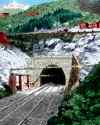 On 29 Feb 1880, miners boring from each end the St. Gotthard Tunnel met, after years of difficult construction work. The tunnel being five miles long, the challenges were enormous, but technology of the later 19th century had improved beyond the stage of picks and shovels. It had to... even just supplying fresh air or moving the excavated rock without suffocating steam engine smoke were problems to be solved. You can read how it was done in an article in this book of the period, The Conductor and Brakeman. On 29 Feb 1880, miners boring from each end the St. Gotthard Tunnel met, after years of difficult construction work. The tunnel being five miles long, the challenges were enormous, but technology of the later 19th century had improved beyond the stage of picks and shovels. It had to... even just supplying fresh air or moving the excavated rock without suffocating steam engine smoke were problems to be solved. You can read how it was done in an article in this book of the period, The Conductor and Brakeman. |
| Book of the Day | |
| |
| Quotations for Today | |
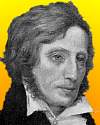 | "The History of Evolution is the real source of light in the investigation of organic bodies. It is applicable at every step, and all our ideas of the correlation of organic bodies will be swayed by our knowledge of the history of evolution. To carry the proof of it into all branches of research would be an almost endless task." (1828) |
 | "Let us only imagine that birds had studied their own development and that it was they in turn who investigated the structure of the adult mammal and of man. Wouldn't their physiological textbooks teach the following? 'Those four and two-legged animals bear many resemblances to embryos, for their cranial bones are separated, and they have no beak, just as we do in the first live or six days of incubation; their extremities are all very much alike, as ours are for about the same period; there is not a single true feather on their body, rather only thin feather-shafts, so that we, as fledgelings in the nest, are more advanced than they shall ever be ... And these mammals that cannot find their own food for such a long time after their birth, that can never rise freely from the earth, want to consider themselves more highly organized than we?'" |
| QUIZ | |
| Before you look at today's web page, see if you can answer some of these questions about the events that happened on this day. Some of the names are very familiar. Others will likely stump you. Tickle your curiosity with these questions, then check your answers on today's web page. | |
| Births | |
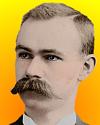 |  Herman Hollerith, born 29 Feb 1860, was an American inventor of a tabulating machine that was an important precursor of the electronic computer. For a certain event in 1890, he invented several punched-card machines to automate the sorting of data. The machine which read the cards used a pin going through a hole in the card to make an electrical connection with mercury placed beneath. The resulting electrical current activated a mechanical counter. Herman Hollerith, born 29 Feb 1860, was an American inventor of a tabulating machine that was an important precursor of the electronic computer. For a certain event in 1890, he invented several punched-card machines to automate the sorting of data. The machine which read the cards used a pin going through a hole in the card to make an electrical connection with mercury placed beneath. The resulting electrical current activated a mechanical counter.  For what event did Hollerith invent his machines? For what event did Hollerith invent his machines? |
 |  On 29 Feb 1792, Karl Ernst von Baer was born, the Prussian-Estonian embryologist who discovered the mammalian egg (1827) and the notochord. He established the new science of comparative embryology. On 29 Feb 1792, Karl Ernst von Baer was born, the Prussian-Estonian embryologist who discovered the mammalian egg (1827) and the notochord. He established the new science of comparative embryology. What is the notochord? What is the notochord? |
| Events | |
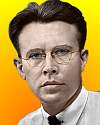 |  On 29 Feb 1940, Ernest O. Lawrence delivered his Nobel Prize acceptance speech in Berkeley, California, rather than Sweden so that he would not lose any time away from his research effort and its funding. On 29 Feb 1940, Ernest O. Lawrence delivered his Nobel Prize acceptance speech in Berkeley, California, rather than Sweden so that he would not lose any time away from his research effort and its funding.  What was the goal of his research at the time? What was the goal of his research at the time? |
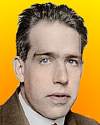 |  On 29 Feb 1936, in the journal Nature, Niels Bohr published a model to explain the effect of bombarding particles on a nucleus. On 29 Feb 1936, in the journal Nature, Niels Bohr published a model to explain the effect of bombarding particles on a nucleus. By what name was this model known? By what name was this model known? |
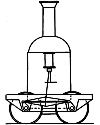  |  On 29 Feb 1880, miners boring from each end of the St. Gotthard Tunnel met, 7,795 meters from the north entrance at 11 a.m. On 29 Feb 1880, miners boring from each end of the St. Gotthard Tunnel met, 7,795 meters from the north entrance at 11 a.m.  Which two European countries did it link? Which two European countries did it link? |
| Answers |
When you have your answers ready to all the questions above, you'll find all the information to check them, and more, on the February 29 web page of Today in Science History. Or, try this link first for just the brief answers. Fast answers for the previous newsletter for February 28: René-Antoine Ferchault de Réaumur; Chemistry; the body louse; tuberculosis; the decade including the year 1935. |
| Feedback |
 If you enjoy this newsletter, the website, or wish to offer encouragement or ideas, please send feedback by using your mail reader Reply button. If you enjoy this newsletter, the website, or wish to offer encouragement or ideas, please send feedback by using your mail reader Reply button. |
--
If you do not want to receive any more newsletters, this link
To update your preferences and to unsubscribe visit this link
If you do not want to receive any more newsletters, this link
To update your preferences and to unsubscribe visit this link
! !


Δεν υπάρχουν σχόλια:
Δημοσίευση σχολίου